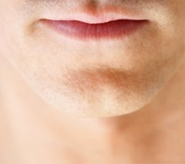
TECHNIQUES, INSTRUMENTS
AND METHODS
THE STEPS AND PROCEDURES OF SURGICAL PROCESSES

Home/Surgical procedures/FAQs
Is it true that tampons are not used? Is it true that tampons are not used? Yes, it is true. For over 20 years, tampons have not been used in any procedure (whether functional or cosmetic or combined). This speeds up the healing process and makes the post-surgery period painless. Painful medications have been done away with.
When can a person resume his/her regular working activities? A person can go back to work in 7/10 days after the surgical procedure, i.e., when the protective metal plate is usually removed.
Is it painful? In the past, the pain was mostly caused by the use of local anaesthesia alone (pain perceived during the procedure) and secondarily by the insertion of bulky tampons, which have always played a major role in post-surgery pain, causing severe headaches. The procedure performed at the PCM uses total anaesthesia (also combined with local anaesthesia) and innovative materials. Hence, a patient treated at the PCM only experiences the inconvenience due to oedema (swelling) which may be likened to a cold.
Which is better, the open or closed technique in rhinoplasty surgery? With closed surgery, the incisions are made internally, with open surgery a small incision is made in the columella resulting in a better view and control of the cartilage structures making up the nose tip. The scar disappears within a few days’ time and hence is invisible. In some cases, for technical reasons, closed rhinoplasty is more advisable, in other situations, open surgery is better. The surgeon must be able to perform both procedures and be able to select the one that fits the requirements of each individual patient. Thus, it is a purely technical matter and it is up to the surgeon rather than the patient to decide.
What if I’m not happy with my looks after the procedure? The study of the image performed on the photographs of the patient, together with examples of previous operations, makes it possible to discuss the matter with the patient, evaluate the result to be obtained and clarify any doubts concerning the patient’s appearance with his/her “new” nose. In many instances, the patient finds the surgical outcome better and more natural than the computer images.
How long does it take for shape and function to stabilise? An appreciable indication is obtained the day the protective plate is removed. Optimal functionality is attained in 15 to 30 days, depending on type of procedure performed and the physiological characteristics of each individual patient. The definitive shape stabilises in 6-12 months, as this is the time it normally takes for a complete resorption of the internal scars. This stabilisation process invariably consists of small and gradual changes.
Is it a procedure that can be done at any age? Definitely at any age, but after puberty, that is to say, when the growth process has been completed. The functional parameters are evaluated based on the problems observed (septal deviation, dimensions and shape of the pyramid), whereas aesthetic parameters will be according to the age and characteristics of the individual patient. Even at a ripe age, the skin is generally able to adapt very well to the new shape.
Can rhinoplasty be performed at the same time as other cosmetic surgery procedures? Yes, compatibly with day surgery requirements. We have already described the procedures affecting the overall appearance of a face (procedures on the eyelids, chin, lips) that can be performed during the same session. The benefits for the patient are obvious: no need for repeated anaesthesia, time and money saved (one hospital admission and one recovery period).
Are there contraindications for people suffering from “hay fever” or allergies affecting the airways and lungs? There are no contraindications. As a matter of fact, rhinoplasty may improve the nasal functions, by reducing the size of the turbinates. Improved functionality has beneficial effects on sports performance too.











